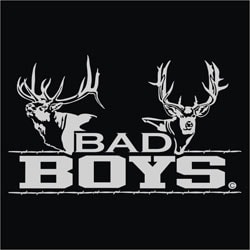Post by Shorthair on Dec 11, 2003 20:56:18 GMT -5
Here is an article from the Delta Waterfowl page. See what you think about it.
Voluntary Restraint (VR) is a Delta program that promotes and fosters a quality ethic amongst waterfowlers. VR was initiated in 1989, when waterfowl populations were at an all time low. VR asks hunters to focus harvest on drakes, especially among sensitive species like pintails, canvasbacks, and bluebills.
VR is based on the premise that most hunting mortality is additive to natural mortality. Delta recognizes that this topic is currently controversial. Earlier analyses based primarily on band returns from male mallards suggested that hunting mortality was compensatory with natural mortality (i.e., hunting had little or no affect on final population size). However, we regard these results as irrelevant, given that most waterfowl populations have a large surplus of drakes.Male ducks contribute little or nothing to breeding efforts. Hens do all the important work in the duck world. They are entirely responsible for laying a clutch of eggs, incubating them until hatch, and caring for the newly hatched brood.However, several recent studies have suggested that hunting mortality is additive for Canada Geese, Black ducks, mallads and canvasbacks. For most remaining species, too few banding data are available to address the issue. A surplus of drakes does exist, and without a doubt, a hen that is harvested in the fall is unable to produce a clutch of eggs the following spring.In the absence of better data, Delta advocates a cautious approach with respect to potential over-harvest of hens.
If you are a waterfowl hunter, try to uphold these top VR standards:
1. Focus your harvest on drakes of all species, not just mallards.
2. Practice good identification techniques: use binoculars, position yourself with the sun at your back, use decoys, and wait for birds to come within range. Be sure of your target at all times, especially during low light conditions. (Test your identification skills with our Duck Quiz)
3. Make every possible effort to avoid losses due to crippling. You can greatly increase the number of ducks retrieved by hunting with a well-trained dog.
4. Lead by example. Take a young person duck hunting, and help them improve their identification skills. Do not tolerate any unsafe, irresponsible, or illegal actions from other hunters.
5. Measure success of the hunt by the experience and the opportunity to be afield with friends, not by the weight of the bag.
6. Support conservation by joining organizations such as the Delta Waterfowl Foundation, and other waterfowl organizations. At the end of the hunting season, consider a contribution for each hen bagged to Delta Waterfowl.
Voluntary Restraint (VR) is a Delta program that promotes and fosters a quality ethic amongst waterfowlers. VR was initiated in 1989, when waterfowl populations were at an all time low. VR asks hunters to focus harvest on drakes, especially among sensitive species like pintails, canvasbacks, and bluebills.
VR is based on the premise that most hunting mortality is additive to natural mortality. Delta recognizes that this topic is currently controversial. Earlier analyses based primarily on band returns from male mallards suggested that hunting mortality was compensatory with natural mortality (i.e., hunting had little or no affect on final population size). However, we regard these results as irrelevant, given that most waterfowl populations have a large surplus of drakes.Male ducks contribute little or nothing to breeding efforts. Hens do all the important work in the duck world. They are entirely responsible for laying a clutch of eggs, incubating them until hatch, and caring for the newly hatched brood.However, several recent studies have suggested that hunting mortality is additive for Canada Geese, Black ducks, mallads and canvasbacks. For most remaining species, too few banding data are available to address the issue. A surplus of drakes does exist, and without a doubt, a hen that is harvested in the fall is unable to produce a clutch of eggs the following spring.In the absence of better data, Delta advocates a cautious approach with respect to potential over-harvest of hens.
If you are a waterfowl hunter, try to uphold these top VR standards:
1. Focus your harvest on drakes of all species, not just mallards.
2. Practice good identification techniques: use binoculars, position yourself with the sun at your back, use decoys, and wait for birds to come within range. Be sure of your target at all times, especially during low light conditions. (Test your identification skills with our Duck Quiz)
3. Make every possible effort to avoid losses due to crippling. You can greatly increase the number of ducks retrieved by hunting with a well-trained dog.
4. Lead by example. Take a young person duck hunting, and help them improve their identification skills. Do not tolerate any unsafe, irresponsible, or illegal actions from other hunters.
5. Measure success of the hunt by the experience and the opportunity to be afield with friends, not by the weight of the bag.
6. Support conservation by joining organizations such as the Delta Waterfowl Foundation, and other waterfowl organizations. At the end of the hunting season, consider a contribution for each hen bagged to Delta Waterfowl.


